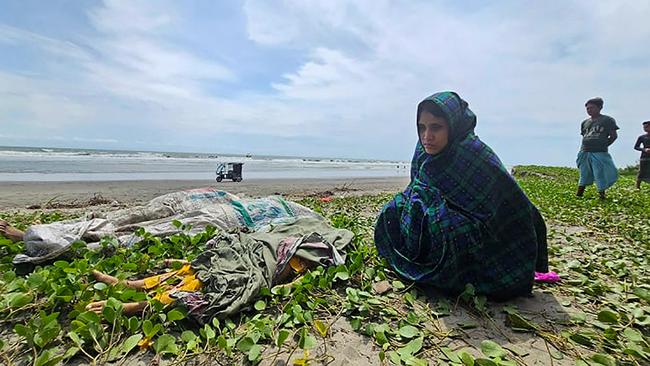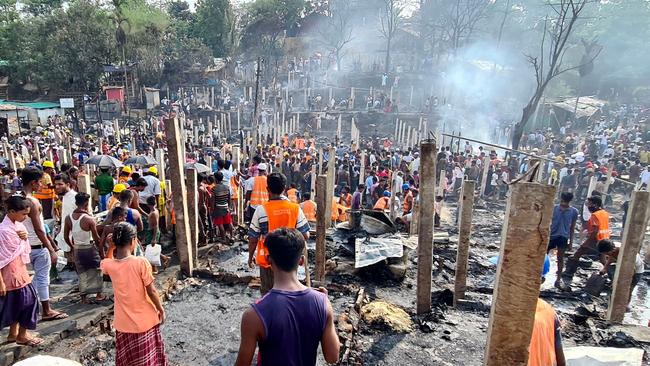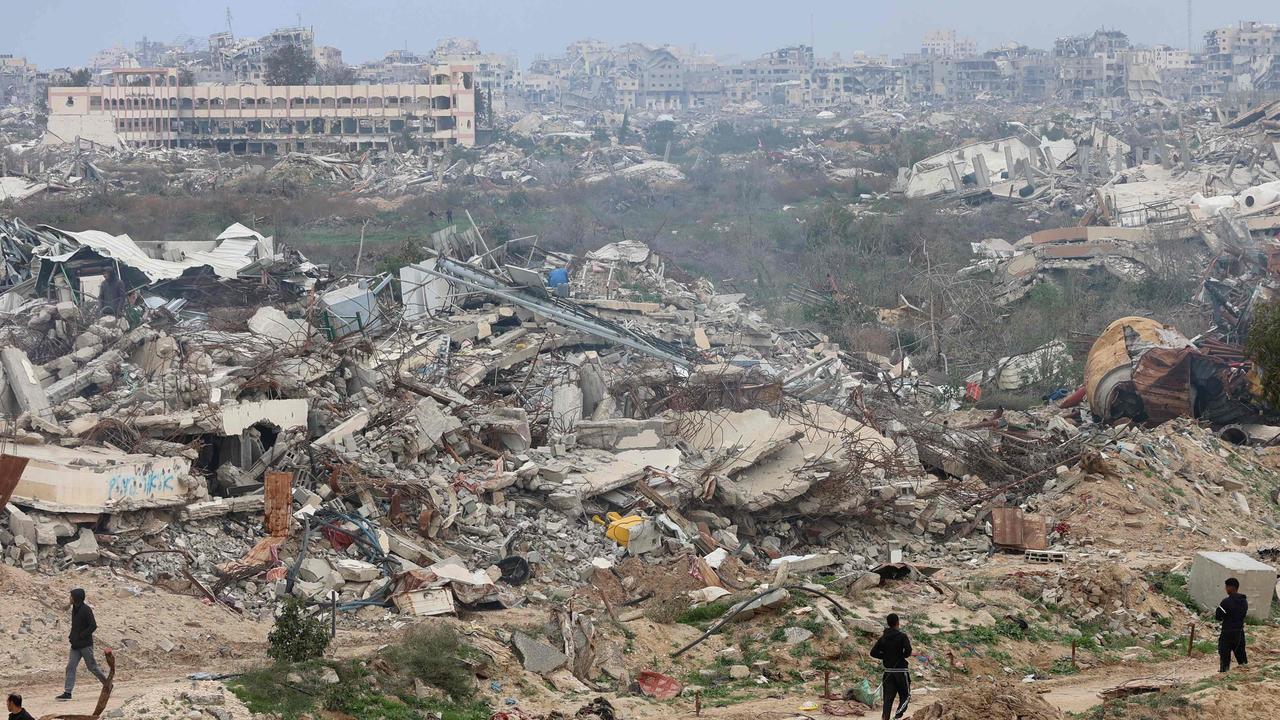Hundreds of Rohingya Muslims feared dead in Myanmar massacre
Revolutionary forces fighting the detested Myanmar regime for control of Rakhine state have denied responsibility for the killings and blamed the military that has been forcibly recruiting Rohingya youths as it loses ground

A drone attack on Rohingya civilians fleeing heavy fighting between military and anti-regime forces in Rakhine State has killed dozens of people – many of them women and children – in one of the worst single-day massacres since Myanmar’s February 2021 coup, raising fears the Muslim minority could be facing a fresh campaign of organised violence.
Rohingya activists, several witnesses and the military have blamed the deadly attack on the Arakan Army, an ethnic-armed group that has captured much of Rakhine State from regime forces and has had an historical enmity towards the Rohingya Muslim minority.
Varying estimates from witnesses and rights groups emerging in recent days from an area under an almost total internet blackout have put the death toll from the bombs that targeted Rohingya civilians waiting to cross the Naf River from Rakhine state into Bangladesh last Monday at between 70 people and more than 200.
The Arakan Rohingya Society for Peace and Human Rights – which claimed more than 200 were killed – on Sunday urged an “immediate global action to prevent to potential extermination of the Rohingya people”.
Unverified footage purportedly taken in the aftermath of the attacks shows a scene of bloody carnage; dozens of bodies lying in mud with abandoned backpacks and upturned umbrellas.
The Arakan Army has denied responsibility for the killings and blamed the Myanmar military that has been forcibly recruiting Rohingya youths from villages across western Rakhine as it loses ground to revolutionary forces.
It alleges Rohingya Islamist insurgents have also been working with the military to stop civilians from fleeing conflict zones.
The AA was “saddened to hear” of the deaths, but they “did not occur in areas under our control and are not related to our organisation”, it said in a statement, adding fleeing civilians should “stay as far away as possible from military junta and extremist groups to prevent being used as human shields”.
Independent Myanmar consultant David Mathieson told The Australian it was “probably true” the Arakan Army was responsible for the killings, though there was still no independent corroboration of that.
It was also unclear if the bombings were a deliberate attack or a tragic “fog of war” accident in which civilians were mistaken for fleeing Rohingya militants now fighting alongside their former military tormentors.
“It’s very important to distinguish between what the core Arakan Army approach is and what various units might be doing on the ground because (AA commanders) have been very clear that civilians must not be targeted,” Mr Mathieson said.
The AA was internationally condemned in May for mass arson attacks on Rohingya villages after its troops seized the key northern Rakhine town of Buthidaung. Its command had since been at pains to demonstrate its commitment to protecting civilians, regardless of ethnicity, releasing footage of its soldiers helping Rohingya elderly and children out of war zones.

Still, Mr Mathieson said: “It’s incredibly alarming that the conflict has got to a point that people are again fleeing to Bangladesh.”
Medicines Sans Frontiers said it was seeing a spike in Rohingya refugees crossing into Bangladesh with gunshot wounds and mortar shell injuries and “becoming increasingly concerned about the impact of the conflict on Rohingya people”.
While so much about the latest massacre remains unclear, it has exposed the complexity of a war being fought on multiple fronts by a number of conflicting forces.
Seven years ago Myanmar military forces launched a brutal clearance operation aimed at routing Rohingya Muslim militants – including the Arakhan Rohingya Salvation Army and Rohingya Solidarity Organisation – it claimed were using civilian Rohingya villages as a launching pad for attacking troops and bases.
A least 730,000 Rohingya civilians fled Rakhine State across the Naf River into Bangladesh’s Cox’s Bazaar, bringing with them horrific accounts of arson, torture, mass rapes and murders by military and allied Buddhist militia.
Those same Rohingya insurgents have recently been accused of abducting young refugees from Bangladesh camps – allegedly for money – for the same Myanmar military it once attacked.
Many more Rohingya inside Rakhine State have been forcibly conscripted by the regime, though others have voluntarily signed up in return for money or the promise of citizenship – long-denied to millions of Rohingya.
Rights groups have repeatedly condemned the military’s forced conscription of Rohingya as a “sick” strategy to create communal conflict between the ethnic Buddhist Rakhine and Muslim minority communities, and to disrupt the mass revolution against the military junta.
UK-based Rohingya activist Tun Khin, who heads the Burmese Rohingya Organisation, complained last month of insufficient attention – thanks to Rakhine’s internet blackout – to the plight of the Rohingya caught in the crossfire between military and revolutionary forces.
“Of course, we want to see this military gotten rid of; we want to rebuild Rakhine state with all the minorities, but Rohingya lives should not be wiped out,” he said.



